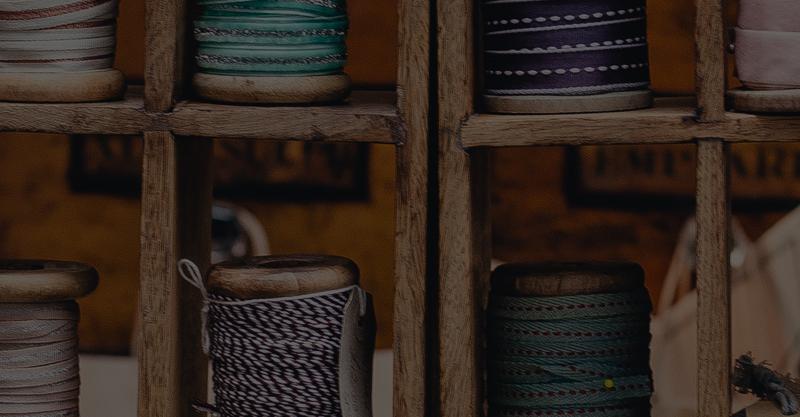- No products in the cart.
Sewing Decorative Trims: The Basics
22
Sep
Decorative trims are a fun way to embellish projects and make them your own. Whatever you’re working on, be it reupholstering an old furniture piece or building an outfit from scratch, adding a fun or subtle trim can finish the look!
How to Start Sewing Trims
Trims typically fall into three categories:
- Edge Trim - Characterized by one flat edge
- Rectangular Trim - Characterized by having two straight edges
- Novelty Trim - Doesn’t fit into the other categories and could have any edge, for example, rosettes, beads, or chains.
Whatever trim you select for your project, the first step is to read the content and care instructions. When using cotton or other natural fabrics, pretreat for shrinking. Don’t forget to pretreat your fabric, if needed, in addition to your trim. Skipping this step could prove catastrophic to your project, as the fibers will shrink and pull in different directions on fabric and trim that was joined before pretreating.
Next, press out the wrinkles in your trim. Depending on the fabric of your trim, you may want to use steam instead of pressing the hot iron to your fabric. Always use steam when you use satin trim.
After your trim is pressed flat, attach it to your fabric using pins, fabric clips, or fabric tape. Consider the content of your trim before poking pins into it, and never use pins on satin or silky trim as they will leave visible holes.
When using your sewing machine, switch to a new, large needle to prevent snags. If your trim is a different color than your fabric, match your thread’s color to the color of your trim.
Consider using a longer stitch length on your trim, depending on how big your trim is. For example, you might need to use a 3-3.5 stitch length for thicker trim instead of a typical 2.5 stitch length.
How to Sew Edge Trim
Edge trim has one straight edge and is typically for using along hems. A common example is a lace trim, and depending on the look you’re going for, you can attach the edge trim over or under your hem. Use an open toe foot on your sewing machine to sew a wide zig-zag along the straight edge of your trim.
To add the trim under your hem, you do so before you sew your hem.
- Subtract your hem allowance from your fabric then sew a basting stitch.
- Pin the straight edge of your trim to your basting stitch upside down. Sew your zig-zag stitch along the edge.
- Turn the hem allowance under and hem your fabric.
Rectangular trim has two straight edges, like ribbon, lace, or braids. Rectangular trim is excellent for adding insets or sewing on top of the fabric. If you’ve chosen a thin trim, attach it to your fabric, then sew straight down the center of the trim.
If your trim is wide, sew on each side. Always sew both sides of your trim in the same direction to prevent puckers.
To create insets without fabric behind them using your rectangular trim:
- Sew both sides of your trim to your fabric, then carefully cut down the center of the fabric, making sure not to cut your trim.
- Finish the raw edge of your fabric to prevent fraying.
- Fold back the excess fabric, then topstitch above the trim on the front of your fabric.
How to Sew Novelty Trim
Novelty trim doesn’t fit in the other categories and has irregular edges. It could be things like rosettes, beads, or chains. Depending on the edge of your trim, it may be easiest to hand sew. Because of the variety of novelty trims, you will have to use your sewing savvy to figure out the best way to attach it to your fabric.
TrimPlace is proud of our versatile collection of trims for all your sewing and crafting needs. Whether you’re looking for subdued styles or statement pieces, TrimPlace has what you need. Look for our how-to’s for sewing specific novelty trims and more!


